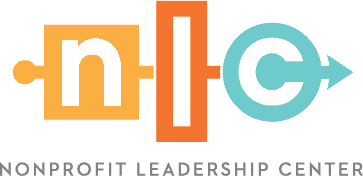In today’s hybrid work environment, bringing nonprofit board members together in person isn’t always possible. Here are seven tips for hosting effective online board meetings for nonprofits.
1. Pick the right platform.
There are a variety of free or low-cost online video conferencing platforms, including Zoom, GotoMeeting and others. These allow members to see each other from the comfort of their homes while providing audio-only options for those whose technology may be limited. In addition to seeing each other’s faces and body language to enhance team dynamics and effectiveness, you can record virtual meetings and share them with members who may be unable to attend. For staff or board leaders who are new to online meetings, conduct a test meeting to help them get more comfortable with the platform and technology. Note that free plans typically limit the number of users and meeting length.
2. Prepare for the meeting.
The meeting host should turn off all computer notifications and close all programs on their computer. This will improve bandwidth and ensure the smoothest transmission of audio and video for participants as you host your online board meeting.
Your CEO or executive director should assign an additional staff member to help board members log into the meeting, provide technical support during the call and monitor the chat box for questions.
3. Plan a 20/20 agenda.
We agree with Nonprofit Learning Labs that as you plan your agenda, you should put 20% fewer items on it, allowing 20% more time for the meeting and conversation. Online board meetings often require repetition, clarification and additional time for discussion. Your board chair should ask officers and members in advance to lead various agenda items. During the meeting, he or she can share their screen to present information.
4. Set ground rules.
It’s helpful to institute structure when you’re hosting online board meetings. Here are a few guidelines we recommend:
- Request that all board members use and turn on their video camera (if they have one), so everyone can be seen and heard during the meeting.
- Let participants know that the board chair will recognize them before speaking to avoid everyone talking at once.
- Ask everyone to use their mute button when they’re not speaking to silence background noises from pets, kids and others working at home.
- Set agreed-upon maximum speaking times for each topic and speaker to ensure you can efficiently and effectively get through your agenda. Assign a staff person to serve as the timekeeper.
5. Do more with less.
We recommend that you keep online board meetings to a maximum of 60 to 75 minutes. If board members are in multiple time zones, be sure to list the meeting time in all time zones so everyone knows the correct start time. (Most people only know their own time zone.)
6. Start and finish strong.
When hosting online board meetings, it’s important to start and close the meeting with relevant details. To open the call, ask everyone to use the chatbox to say hello. It’s a good way to get people focused and comfortable with technology. During the last five minutes, ask everyone for a closing thought, or consider the rose/thorn technique for what worked well and what still needs improvement.
7. Use tech tools to improve facilitation.
Consider using the chatbox, poll and quiz functions to enhance the efficiency of your meeting:
- Use the chatbox to ask for a motion, second and other brief responses.
- Use a poll for yes/no questions and asking for feedback on proposed actions, such as “What suggestions do you have to improve future online meetings?”
- For a mission moment, create a quiz using three fast facts about your organization’s impact, such as the number of people served last year or the cost to help one family.
READ NEXT: 10 Tips for Working from Home Effectively
Online Meeting Dos & Don’ts
DO: Use PowerPoint to advance your meeting agenda and highlight key data points being discussed. Use transition slides to keep attendees on track, such as a consent agenda, action items, financial discussion, etc. to frame your meeting.
DO: Allow extra time for questions throughout the meeting. People may need more time to process the information being shared, and it will take longer to hear and respond to questions.
DON’T: Fill slides with text. Just show the key points on your visuals with as few words as possible. Use white backgrounds and easy-to-read black or dark fonts of 14-point or higher. Provide detailed financial statements, committee reports, meeting minutes and other information in advance.
DO: Add a phone number or email to the bottom of each slide for participants to contact regarding technical problems without interrupting the meeting.
DON’T: Use animation in slides. They can interfere with the audio based on each user’s Internet speed. Streaming videos can also be problematic and should be tested in advance.
Become a Board Rock Star
Join the Nonprofit Leadership Center for one of our upcoming Board Governance Rock Star Certificate series programs to learn the fundamental nonprofit governance concepts every nonprofit leader should understand and practice.
During this two-part, interactive virtual workshop, you’ll discover best practices for board structure and operations, board member roles and responsibilities, and financial and legal oversight. You’ll also build an invaluable network of nonprofit leaders that you can consult at any time.


